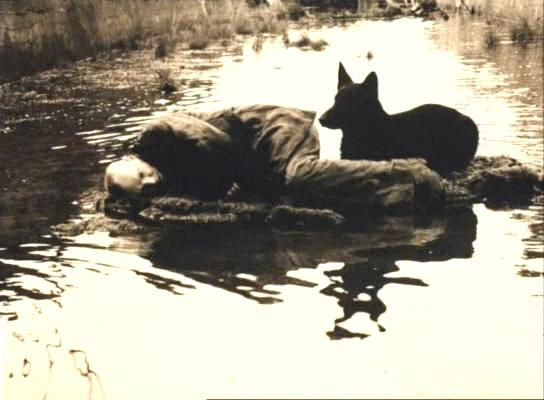This new popular art of filming, that spontaneously came about on the edges of traditional artistic and cinematographic circuits, shapes an artistic expression that relates the movie industry with video media, that adds acoustics to the musical video clip, and the spectacle of the video game scenarios with the communicative and participative immediacy of social networks.
It is not a substitute for any other previous art, like photography was not a substitute for pictorial representation, nor are the movies—formed with successive photo stills—substitutes for photography; on the other hand, they are added to the list of other current audiovisual media with their own specific multimedia characteristics that reflect the signs that define our time.
T H E T R I P L E C L A S S I F I C A T I O N : R E A L , V I R T U AL , M A C H I N I M A
The popularization phenomenon of digital artistic creation is very recent, but we can move forward with the immense possibilities for the future of these artistic expressions, the result of a globalized world laid out in a space where there are no limits or borders. A popular video-film within everyone's reach: “Cinemapop.”
The audiovisual content that we showed at the World Expo Shanghai, gathered in this cinematographic section, is comprised of videos that illustrate the triple classification of current video art, including the machinimas that were on exhibit for the first time as a new type of video art in the environment of an event of universal character. The triple classification. Since artistic creations mix content from various categories, producing hybrid works, three basic types can initially be distinguished according to the technique employed and the degree of virtual immersion. Real Video, Virtual Video, and Machinima.

But, independent from the technique utilized or the virtual immersion obtained, everything indicates that we are leaning toward a new movement of artistic image-in-motion creation that will be the norm in the near future, with a few characteristics and elements of its own that are immersive, interactive, participative, and immediate.
GLOBALIZED CULTURE
The most immediate sources from contemporary culture for audiovisual and video-cinematographic creation are found in traditional film, video games, publicity, social networks, and video clips. Some of the cinematographic titles that are related with generated or metaverse worlds.



The metaverse, which is generated by computer programs and developed by different virtual environments, even in some video game scenarios, has been proclaimed by Peter Greenaway as the new artistic and cinematographic media that will allow for the birth of a new type of film that is digital and that does not need to have large budgets, or media, or actors, but that is made with work teams online, and, on occasion, through avatars: “Cinemapop.”
This generated work has also opened the door for an innovative type of art that is intangible, immersive, and interactive. Virtual Art. OPEN THIS END, for the first time in history, exhibited it at the World Expo Shanghai 2010 in the universal forum.





Audiovisual artworks that arise from this technological, cultural, and formal mix that characterizes our society since the start of the XXI Century have contributed to the perception that new shapes of reality exist, a new type of art and innovative creations of video filming that are presented directly before a pluralistic and numerous audience. However, not all audiovisual expressions are similar, nor have the same characteristics.
In the field of image movement, we can appreciate the initial differentiation if we take into consideration two distinct elements: the technique employed and the degree of virtual immersion that is obtained with each technique. Two singular factors that can be applied to all audiovisual artistic manifestations, even those works that mix various types, producing hybrid images, resulting in, at first, three large categories of video art and current filming: Real, Virtual, and Machinima.
But, independent from the technique utilized or the virtual immersion that is obtained, everything indicates that we are witnessing a new movement of artistic image-in-motion creation that will be the norm in the near future, with some characteristics and elements of its own that are recognized as immersive, interactive, participative, and immediate.
VIDEO ART NOW
SOURCES
CINEMAPOP
In relation to contemporary audiovisual creations, Cristina Garcia-Lasuen wrote the text “Video Art Now: Real, Virtual, and Machinima,” published and put on the front page of “ArtPulse” and “Hoyesarte,” among other media, in 2010.
In the text, she describes the new situation that the new media have developed in the artistic world, where, effectively, the digital showcase of the Internet democratizes new creation opportunities.
CINEMAPOP
Árbol del aire Pabellón de Madrid World Expo 2010 Ecosistema Urbano
“I know that you're afraid... you're afraid of us. You're afraid of change. I don't know the future. I didn't come here to tell you how this is going to end. I came here to tell you how it's going to begin. I'm going to hang up this phone, and then I'm going to show these people what you don't want them to see. I'm going to show them a world without you. A world without rules and controls, without borders or boundaries. A world where anything is possible. Where we go from there is a choice I leave to you.” Neo, from the Matrix, to the Wachovski brothers.
Árbol del aire Pabellón de Madrid World Expo 2010 Ecosistema Urbano
Árbol del aire Pabellón de Madrid World Expo 2010 Ecosistema Urbano
Cartel de OPEN THIS END en la World Expo Shanghai 2010. Exposiciones diarias durante 6 meses. Signos de Contemporaneidad


